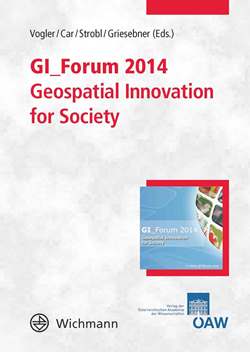

GIS as a technology has come a long way, from
the early adoption of technical wizardry to the
ubiquitous, if unconscious use by the masses. The
emergence of a GISociety is on its way through
technological development, theoretical and empirical
scientific research and inclusion of technology
into education with increasing pedagogical justification.
Defining new dimensions of hard- and software,
brainware and orgware are all needed to
further enhance the GISociety with new geospatial
innovations.
This issue of the Geoinformatics Forum (www.gi-forum.org)
links into these research areas. We are pleased to present
work by researchers who actively contribute to the
rising of geospatial innovations for society in theoretical,
empirical, technical, and educational terms.
This reflects that innovative alterations can only be
created though close interaction among the domains
of science, technology and education.
Topics of the 2014 issue therefore include:
• Innovations in geospatial technologies
• Advances in GIScience
• Monitoring global change
• Geoinformation for public health
• Education with digital earth
• Spatial Citizenship education
• Geospatial learning environments
The book is aimed at researchers and practioners
in the field of geoinformation with an academic,
industrial or educational background.
Work on this publication has been co-funded by the following projects and networks
funded by the European commission:
LLP-Comenius multilateral project SPACIT
(517908-LLP-2011-1-AT-COMENIUS-CMP)
2014,
978-3-87907-545-4
978-3-7001-7652-7
2308-1708
566 pages
Print edition is available at Wichmann-Verlag, Berlin